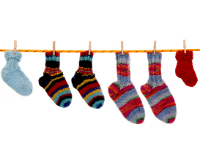Nurture Your Child's Emotional Intelligence
/We want the best for our children. From the moment they're born, we look for ways to stimulate learning potential and strengthen their IQ (Intelligence Quotient). While studies differ on whether we can actually enhance IQ, they concur that we can - and should - support Emotional Intelligence/Quotient (EQ). Doing so not only improves a child's ability to learn, it provides tools for managing emotions and developing coping skills that result in healthy self-esteem and good decision-making.
EQ is defined as the ability to identify and manage emotions, as well as having regard for the emotions of others. People with high EQ exhibit leadership skills and are typically excellent team members. Of course we want our children to have a high EQ. However, with our busy adult lives and our child's organized play, we seem to be ignoring its importance. Today, nearly one in five children has an emotional disorder such as anxiety, depression, or behavioral conduct problems.
According to Dr. Gerald Newmark, founder of the Children's Project, "[It is vital] to create a positive atmosphere in which family members interact with each other in ways that make everyone feel respected, important, accepted, and secure." In doing so, "we can become a powerful force for developing emotionally healthy and high-achieving children and families."
Try incorporating these strategies into your family's routine:
Model Coping Skills. Children learn by observing you. Research shows this begins in the prenatal period, when developing babies sense maternal stress. When your anxiety levels get high, don't just muddle on. Take time out. Do something just for you. This kind of self-awareness models emotional health and shows children how to cope with stress.
Solve Problems Together. Whether it's kids who don't want to get out of bed for school or an epic struggle around chores, open communication is the best way to reduce tension. Talk with your kids about what's important to your family and why. Invite them to offer solutions.
Listen to Your Kids. Too often adults view kids' problems as insignificant or silly. But our children see themselves as real people with real problems. Ask them about their challenges and concerns. When children feel heard, they feel validated and that builds trust between them and you.
Express Gratitude. Acknowledge the good things in your life; this steers focus away from negative events and gives new perspective to tough situations. Keep a family journal, or during mealtime have each person express what she or he is grateful for that day.
Honor a Child's Spirit. Children can experience profound moments that shape their lives in enduring ways. It can be a moment of wonder (seeing the Grand Canyon for the first time) or an awareness of their own inner wisdom (an 'a-ha' moment). It can be moments in which children ask big questions about life. Set aside time to discover and discuss these experiences.They can become cornerstones in a child's evolving sense of themselves and an awareness of something greater than the material world.
Image Attribution: alenkasm/bigstockphoto.com






